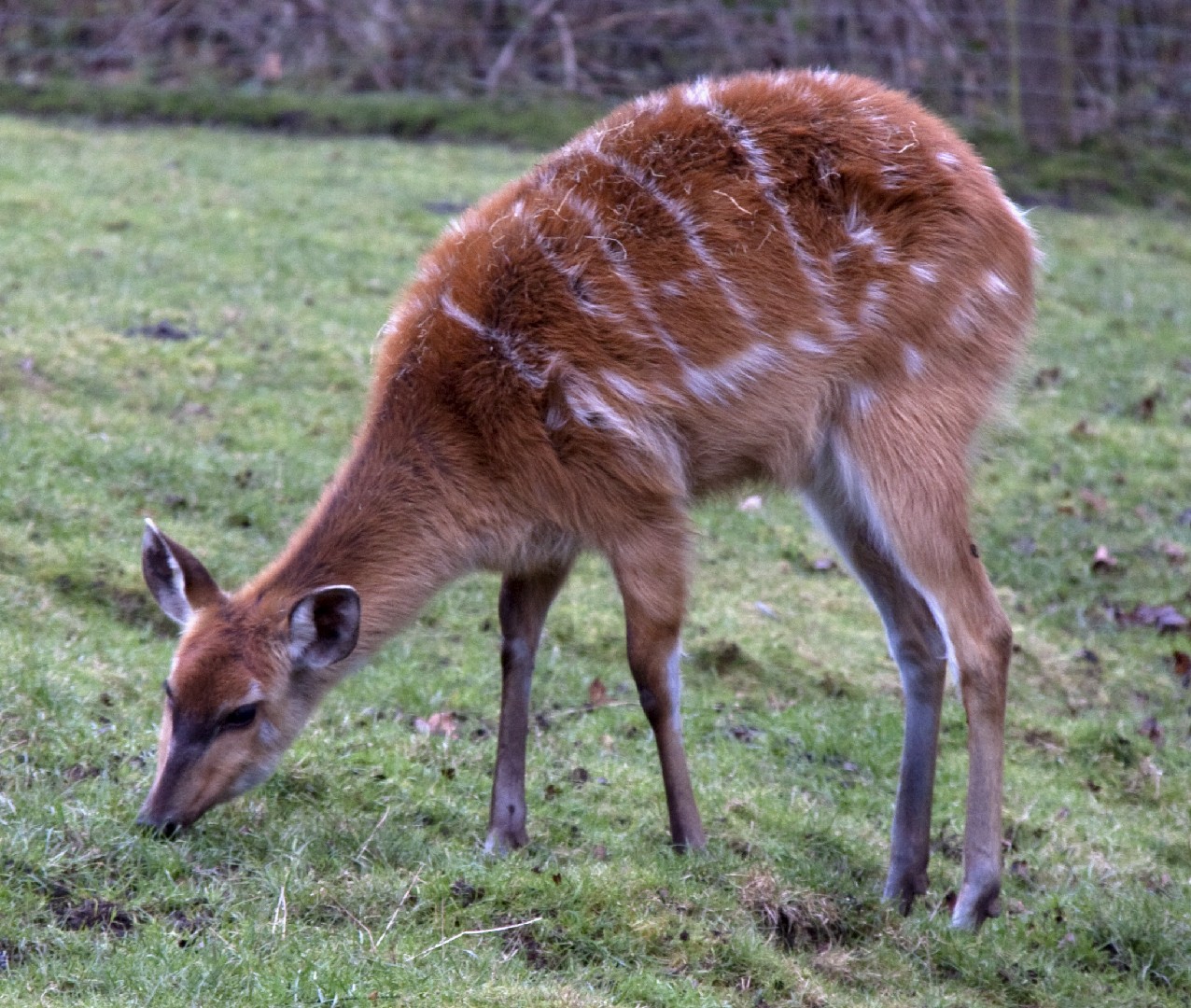Sitatunga
A species of Elands, Also known as Aquatic antelope Scientific name : Tragelaphus spekii Genus : Elands
Sitatunga, A species of Elands
Also known as:
Aquatic antelope
Scientific name: Tragelaphus spekii
Genus: Elands
Content
Description General Info
 Photo By Tony Hisgett , used under CC-BY-2.0 /Cropped and compressed from original
Photo By Tony Hisgett , used under CC-BY-2.0 /Cropped and compressed from original Description
Sitatunga – male and female The sitatunga is a medium-sized antelope. It is sexually dimorphic, with males considerably larger than females. The head-and-body length is typically between 136–177 cm (54–70 in) in males and 104–146 cm (41–57 in) in females. Males reach approximately 81–116 cm (32–46 in) at the shoulder, while females reach 72–90 cm (28–35 in). Males typically weigh 76–119 kg (168–262 lb), while females weigh 24–57 kg (53–126 lb). The tail is 14–37 cm (5.5–14.6 in) long. The saucer-shaped ears are 11–17 cm (4.3–6.7 in) long. The sitatunga is almost indistinguishable from the nyala, except in pelage and spoor. Speke pointed out that, though "closely allied" to the waterbuck, the sitatunga lacks stripes and is spotted instead. The coat colour varies geographically, but, in general, is a rufous red in juveniles and chestnut in females. There are white facial markings, as well as several stripes and spots all over, though they are only faintly visible. White patches can be seen on the throat, near the head and the chest. A pair of inguinal scent glands are present. The coats of males darken with age, becoming gray to dark brown. Males develop a rough and scraggy mane, usually brown in colour, and a white dorsal stripe. There is a chevron between the eyes of the males. The body and legs of this antelope are specially adapted to its swampy habitat. The hooves of the male are elongated and widely splayed. The rubbery, shaggy, water-repellent coat is minimally affected by slimy and muddy vegetation. The wedge-like shape and lowering of the head, coupled with the backward bend of the horns (in males) provides for easy navigation through dense vegetation. The pasterns are flexible, and the hooves, banana-like in shape, can reach a length of up to 16 cm (6.3 in) in the hindlegs and 18 cm (7.1 in) in the forelegs. The pointed toes allow it to walk slowly and almost noiselessly through the water. Moreover, the colour of the coat provides an excellent camouflage. Hearing is acute, and the ears are so structured that the animal can accurately determine the direction from where a sound has originated. This adaptation is of profound use in habitats where long sight is of very little value due to the density and darkness of the environment. 
General Info
Lifespan
15-20 years
Diet
Sitatunga predominantly feeds on different vegetation including leaves, flowers, and fruits. Notably, it exhibits preference towards the Acacia and Combretum species trees, complementing its diet with herbs and seeds.
Appearance
Sitatunga has a slim, elongated body reaching up to 150 cm in length and stands over a meter tall at the shoulder. Its coat is a soft brown interspersed with delicate white vertical stripes, serving as camouflage. A noteworthy spiral-structured pair of horns adorns the head of males, uniquely identifying the species. From the shoulder down, a distinctive hump can be observed in mature males.
Behavior
Sitatunga demonstrates crepuscular behavior, predominantly active at dawn and dusk. Skilled swimmers, these solitary creatures prefer being near bodies of water. They mark their territories with scent from their preorbital glands. When faced with threats, they freeze, relying on their camouflaged coats for protection.
Population
Decreasing